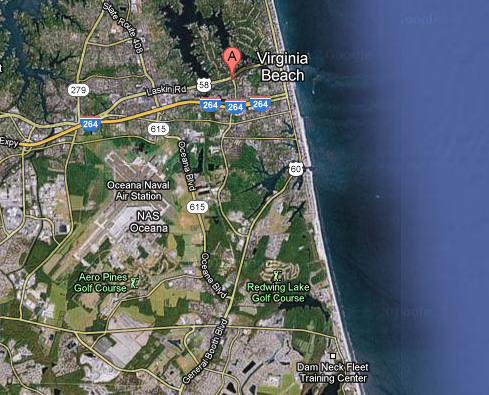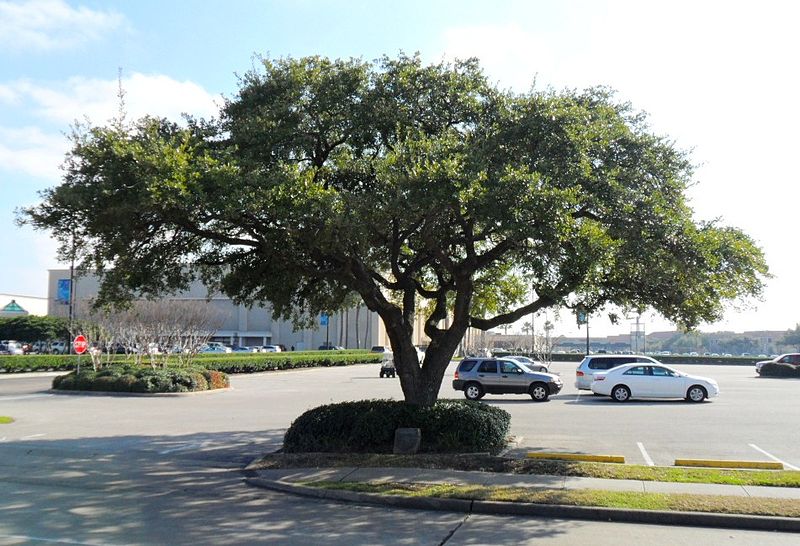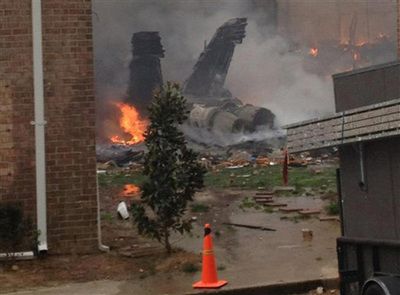(AP Photo)
An F-18 jet crashed into an apartment building in Virginia this afternoon. The two-pilots ejected, so let’s deal with the obvious question that few people will actually want to ask: Why would a pilot eject from his jet if there was a chance it was going to kill people on the ground?
The answer likely can be found in this map. The icon shows the location of the crash:

If the jet was merely crippled, the pilots could’ve steered it toward the ocean, then bailed. But note what lies to the lower left of the icon — the airport. It’s not known yet whether the jet was taking off or landing at the airport when the crash occurred, but in either case the close proximity of both runway and ocean indicates the pilots didn’t have the ability to steer the plane to an area where it wouldn’t hurt someone. And they likely only had a second or two to decide what to do.
These sorts of accidents, though few, lead many people in military aviation to think of this:

(Photo: Wiki Commons)
This is the “hero tree” in Houston, which honors Capt. Gary Herod, who crashed his jet trainer on the site in 1961. His plane was crippled and air traffic controllers were advising him to bail out.
“Not yet,” he said. And those were his last words. There were too many houses below, so he steered his jet to an open area. He died in the crash.
A similar problem faced Don Hinz of Woodbury in 2004. The former Navy pilot was flying a red-tail P-51 near the airport in Red Wing when his engine stopped. He steered it away from people on the ground, power lines, and landed between nearby houses. It all happened within 30 seconds, and he died of his injuries.

